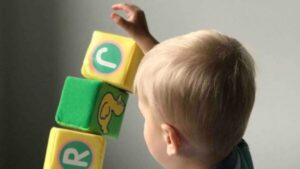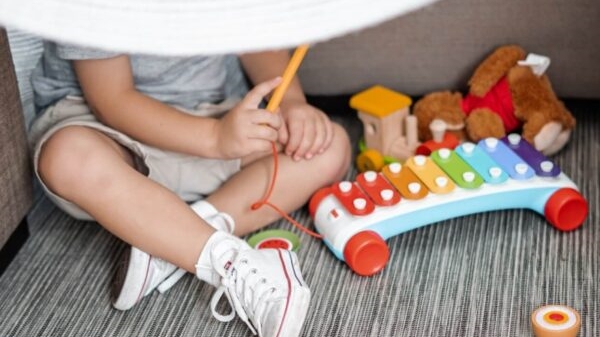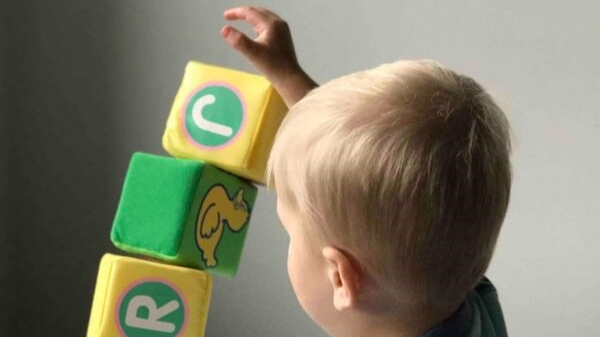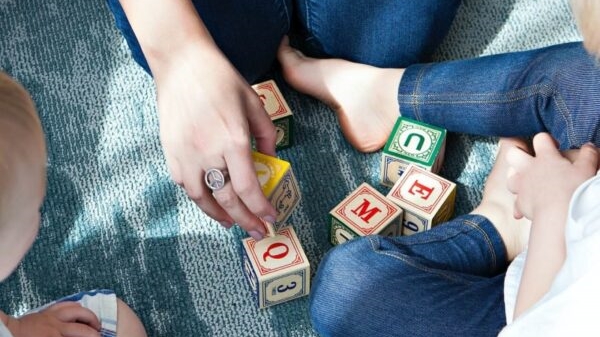
10 Innovative Projects You Can Create with Magnetic Blocks
Magnetic blocks are a classic toy that never seems to go out of style. They’re fun, creative, and educational for kids of all ages. With

Magnetic building blocks are a popular developmental toy for toddlers and young children. These sets allow kids to build creatively and learn about STEM concepts like shapes, colors, polarity, and structural engineering.
However, there are important safety considerations when using magnetic blocks with curious toddlers who explore with their senses and may accidentally swallow small parts.
This comprehensive guide outlines prudent precautions and best practices for maximizing magnetic play benefits while minimizing ingestion and injury risks through proper supervision, education, and environmental controls.
When choosing magnetic building toys for toddlers, select blocks designed specifically for young children with adequate safety features and magnet specifications.
Proper supervision, storage, and Magnet education are essential to using magnetic building sets safely once you have appropriate toddler blocks.
If your child seems fixated on the magnetic pull or texture, find appropriate alternatives that satisfy the sensory craving like magnetic sensory boards or fidget toys.
If magnets are swallowed or inhaled, escalate the incident to 911 emergency responders immediately. Rapid diagnosis and surgical intervention are critical.
For magnet ingestion or aspiration, request care from pediatric emergency doctors, pediatric surgeons, pediatric gastroenterologists, and/or pediatric pulmonologists. They specialize in young children.
Top children’s hospitals and pediatric centers have the most experience with these hazardous pediatric accidents.
If your toddler is diagnosed with swallowed or inhaled magnets, medical providers have various emergency procedures to retrieve the foreign bodies before catastrophic damage occurs.
Magnets beyond the esophagus may require endoscopy under general anesthesia to locate and extract them from intestinal or airway walls using special tools.
Gastroenterologists and pulmonologists specially trained in endoscopic foreign body removal techniques may be needed.
Surgery is required if magnets have blocked or torn digestive or respiratory tract tissues.
Laparoscopic surgery results in smaller incisions and faster recovery when magnet removal is required.
For multiple magnets ingested, whole bowel irrigation with polyethylene glycol solutions is sometimes used to try flushing them out without surgery.
If magnets have already passed beyond the stomach and do not appear attached on scans, surgeons may decide to carefully observe bowel movements and intervene only if signs of obstructions or perforations appear. However, this is controversial due to the risks of waiting. Close monitoring and repeat imaging are required.
After emergency medical intervention, preventative actions must be taken to avoid repeat magnetic toy incidents that could have fatal consequences.
Strongly consider removing all magnetic toys from your home until your child is past the oral exploration stage, at minimum age 4 but up to age 7 or 8.
If magnetic toys remain in homes with older siblings, install high-locking cabinets. Never leave them in playrooms or bedrooms unattended.
For at least 1 year post-ingestion, provide line-of-sight supervision anytime magnetic toys re-enter your home. Never let them play alone without an adult again.
Schedule an appointment with a child psychologist to identify and treat compulsions to mouth objects. Sensory therapy may also help. Early intervention is key.
Provide a consistently enriching routine full of stimulating non-magnet toys and activities to redirect their focus, curiosity and energy toward safer channels.
Note any changes in your child’s behavior, eating habits, bowel movements or emotional state after magnet ingestion and inform your pediatrician promptly if concerns arise. Seek supportive care as needed.
The emotional trauma of a magnet ingestion emergency understandably heightens parents’ protectiveness and vigilance. With time, counseling, developmental maturation, preventative measures, education, and compassion, your child can gradually rebuild the necessary judgment for safe magnetic play under direct supervision in the years to come.
When used properly following all safety practices, magnetic building toys provide toddlers and preschoolers intellectual challenges and enriching learning opportunities that foster creativity, early STEM skills, sensory processing, and problem-solving abilities.
The ability to attach blocks together in infinite ways promotes open-ended construction play limited only by a child’s creativity.
Figuring out how to assemble magnetic blocks into structures and balance shapes helps children recognize patterns and improves spatial relationship skills.
Experimenting to build tall towers and then adjusting designs when they topple over teaches early engineering, physics, and design thinking.
Magnetic blocks allow the experience of modifying structures in multiple ways to arrive at solutions, nurturing flexible problem-solving cognition.
Experiencing magnetism firsthand helps children grasp polarity, attraction/repulsion, and other abstract science concepts through multisensory discovery.
Counting magnet pieces, sorting shapes, and recognizing patterns are foundational math competencies developed through magnetic block play.
The physical dexterity and hand-eye coordination required to precisely connect magnetic blocks develop toddlers’ small muscles and sensorimotor integration.
For toddlers who crave sensory stimulation, the satisfying snap of magnetic blocks provides learning through listening, feeling, touching, and seeing.
With attentive supervision, magnetic building toys can safely nurture children’s cognitive, STEM, and sensory processing abilities.
However, given the hazardous risks, if misused, strict precautionary measures must always be applied. Your child’s curiosity and health both depend on it.
By staying vigilant, magnetic blocks can expand young minds without sacrificing well-being.


Magnetic blocks are a classic toy that never seems to go out of style. They’re fun, creative, and educational for kids of all ages. With

Magnetic building blocks have become an essential toy for encouraging creativity, imagination, and early STEM skills in children. With so many brands on the market,

STEM (science, technology, engineering and math) fields are still predominantly male, with women making up only 28% of the STEM workforce. However, getting girls interested

Magnetic blocks are a classic toy that most children have played with at some point. However, these simple colored blocks are so much more than

Magnetic blocks are a classic toy that never seems to go out of style. They’re fun, creative, and educational for kids of all ages. With

Magnetic building blocks have become an essential toy for encouraging creativity, imagination, and early STEM skills in children. With so many brands on the market,

STEM (science, technology, engineering and math) fields are still predominantly male, with women making up only 28% of the STEM workforce. However, getting girls interested

Magnetic blocks are a classic toy that most children have played with at some point. However, these simple colored blocks are so much more than
Copyright © 2024 magneticbuildingblockskit. All Rights Reserved.